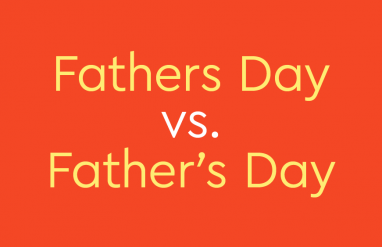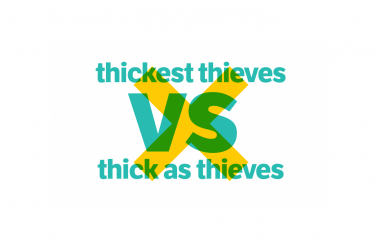Commas can separate items in a list—for most of us this is a grade-school lesson. However, there’s one comma use that tends to complicate the issue even beyond our recess and lunch box years: the Oxford comma.
What is the Oxford comma?
In a list of three or more items, the last comma is called the Oxford comma (or the serial comma). For example, in He bought eggs, milk, and bread, there’s a comma between each item listed. The comma before and is the Oxford comma. Not all style guides agree on whether to use the Oxford comma.
In some cases, you can leave the Oxford comma out without changing the meaning of the sentence. If you delete it from the previous example, it still has the same meaning: he bought eggs, milk and bread.
In other cases, the Oxford comma can be necessary. For example, in the sentence I love my pets, chocolate, and pizza, the Oxford comma makes it clear that all three items are separate. This one could be confusing if the Oxford comma were left out: I love my pets, chocolate and pizza might mean that the speaker’s pets are named Chocolate and Pizza.
The debate over the Oxford comma
The modern comma descended directly from Italian printer Aldus Manutius. (He’s also responsible for italics and the semicolon!)
In the late 1400s, when Manutius was working, a slash mark (/, also called a virgule) denoted a pause in speech. (Virgule is still the word for comma in French.) Manutius made the slash lower in relation to the line of text and curved it slightly. In the 1500s, this new mark acquired the old Greek name comma. The word comma literally meant “a piece cut off,” which is from the Greek koptein, meaning “to cut off.”
Other than the period, the comma is the most common punctuation mark in English.
The argument for the Oxford comma
As you can tell from the sentence I love my pets, chocolate and pizza, those who argue in favor of the Oxford comma have a whole slew of example sentences that serve as proof it’s sorely needed. (In fact, we have a whole slideshow on the Oxford comma and bizarre misunderstandings that its absence has caused, if you’re in need of a laugh.)
If you’re following a stylebook to write a paper or article, be sure to check its policy for commas. The Chicago Manual of Style is pro-Oxford comma, while the Associated Press Stylebook is decidedly against it as a rule—but will allow it for the sake of clarity. (In 2017, they issued a clarification on their policy, to assure writers they could use it in cases where they deemed it necessary.)
The argument against the Oxford comma
Strangely enough, while the comma is so named after the Oxford University Press, which requires it in its style guidelines, it’s not exactly popular in Britain. The anti-comma camp is loudest there, and those who oppose this punctuation mark argue it’s unnecessary and clutters up a sentence.
In the 1950s, writer James Thurber famously complained about the overuse of the comma in The New Yorker, making the argument that “the red white and blue” looked much better than “the red, white, and blue,” when it comes to the American flag. Some writers who oppose the comma have noted that there are other ways to remedy a confusing sentence.
Newspapers, of course, which have historically needed to conserve space and newsprint, tend to omit the Oxford comma.

When to use the Oxford comma
The Oxford comma accompanies the conjunctions and or or within a series of items:
Examples of the Oxford comma in use:
- During the trip, the tourists visited Morocco, Spain, and Portugal.
- He’s invited only his sister, his parents, and his best friend to the graduation.
- I’d like to thank my professors, Meryl Streep, and Alfre Woodward, for the inspiration they’ve provided throughout my acting career.
The comma is helpful in separating items in a list that includes conjunctions.
More examples of the Oxford comma in a list:
- For lunch they packed several cartons of milk, carrot sticks, and peanut butter and jelly sandwiches.
- This blanket is available in red and white, green and blue, and red and blue.
With these tips in mind, we think you can tackle your own tricky sentences, whether they use commas or Oxford commas. (And truth be told, if there’s a pet Pizza in your life, that’s always going to cause some confusion!)
Feeling good about your comma placement? Then take this Oxford comma quiz!













